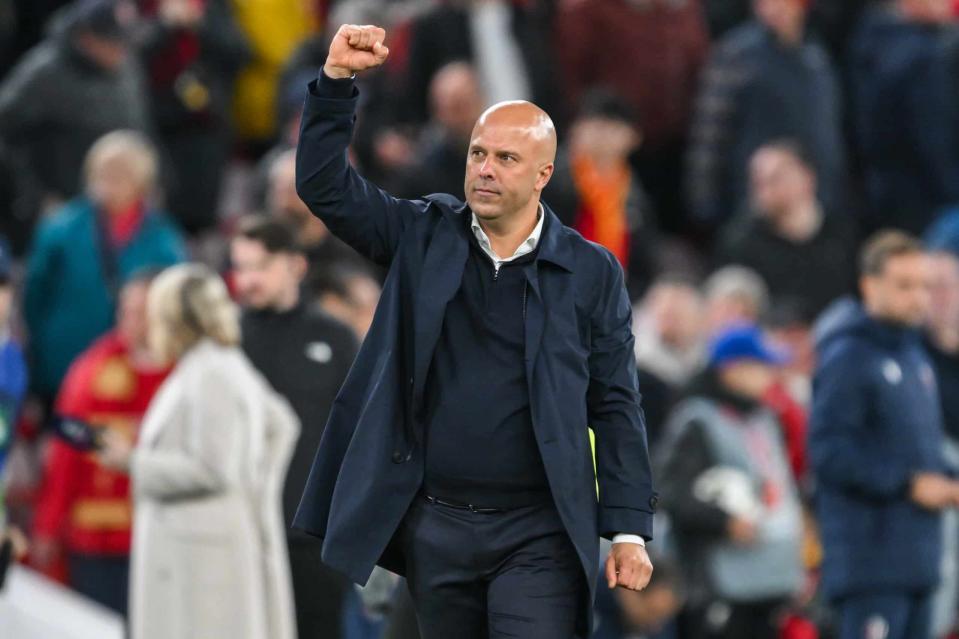Tactical Analysis: Liverpool’s Dominance Over Bologna Unpacked

Liverpool’s Tactical Masterclass Against Bologna: Champions League Triumph
Liverpool secured a comfortable victory in the Champions League against Bologna on Wednesday night, doing so with efficiency and calmness. In a season likely to be plagued by fixture congestion, this kind of performance will undoubtedly satisfy both the team and their loyal fanbase. Despite a few nervy moments, Liverpool’s quality shone through, particularly in key areas of the pitch.

I must confess, this was my first trip to Anfield this season, and while I love soaking in the legendary atmosphere, the experience was even better this time as I explored the Brodie’s Sports Bar in the new Anfield Road stand. I didn’t expect to be enjoying street food paired with a glass of red wine while flipping through an LFC Match Programme – an actual physical one! After 10 years of avoiding them, assuming they’d been replaced by digital updates from the club, it was a pleasant surprise to see them evolving alongside technology. But onto the match itself!
Box Overloads: The Key to Early Success
From the very first whistle, Liverpool were relentless in sending multiple players into Bologna’s box to create overloads and capitalise on attacking opportunities. Gravenberch, alongside the attacking trio, constantly bombarded Bologna’s defensive lines, with full-backs providing crucial support. This strategy led directly to some of the game’s most threatening moments.

In one such instance, Liverpool’s first goal arrived courtesy of Mac Allister after a neat build-up from the right flank. The delivery from Salah found two forwards and a midfielder inside the box, with more players arriving in a second wave, ensuring there were enough red shirts to finish off the chance. As you can see from the visuals, this constant presence inside the penalty area was a defining feature of Liverpool’s offensive play. Slot clearly encourages the midfielders to push forward and provide scoring options, relieving the pressure on the forwards to do all the finishing.

A few moments later, yet again, Salah orchestrated another chance from the right, with two midfielders and two forwards making their way into the box. It’s evident from this and other moments that the right side of the pitch was Liverpool’s most productive area in attack.

Dominance on the Right: Salah’s Impact and the Expected Threat Zone
Liverpool’s Expected Threat zonemap (credit to Mark Matrai and xfb Analytics for the visualisations) further highlights this emphasis on the right-hand side. The hottest areas of threat creation on the pitch all came from Salah’s movement, showing how pivotal the Egyptian forward was to Liverpool’s victory.

From dangerous crosses to goal-scoring opportunities, everything seemed to flow through him. And it wasn’t just about making the final pass; it was about drawing defenders and opening space for others, as shown in the passes into the box visual.

You could also see this dominance reflected in the shot map, where Liverpool managed to take five shots from the most dangerous areas inside the penalty box – a testament to the quality of chances they crafted. Converting such high-quality opportunities is the hallmark of long-term success and shows that Liverpool are well-prepared for deeper stages of the competition.

Cautious Build-up: Patience Over Recklessness
Liverpool’s build-up play was far from reckless. In fact, it was rather cautious. As illustrated in the deep build-up visual, the defenders stayed in their designated positions, and Alexander-Arnold didn’t invert into midfield as he often does. Instead, the double pivot in midfield, featuring Gravenberch and Mac Allister, dropped deep to receive passes from Alisson. By pulling Bologna’s midfielders out of position, Liverpool could then launch long balls towards Salah, who acted as a pivot to create mini transitions.

These tactical shifts, orchestrated by Slot, ensured that the team remained organised, preventing any unnecessary exposure at the back. And with a congested schedule, this level of control is essential to avoid fatigue setting in too early in the season.
Defensive Solidity and the 4-2-4 Block
Liverpool’s defensive formation also caught my eye. The team operated in a 4-2-4 defensive block, with Szoboszlai pushing high alongside Núñez. This compact setup was designed to force Bologna to play through the wings, limiting their ability to exploit the central areas of the pitch. The tactic worked well, particularly in the first half, when Bologna struggled to create any meaningful openings.

Szoboszlai’s work rate was impressive. His energy on and off the ball was immense, particularly in ground duels. However, it’s clear that Slot wants more from him in terms of goal contributions, which might be a heavy load to bear given his pivotal role in Liverpool’s midfield. Nevertheless, Szoboszlai’s commitment to his defensive duties shouldn’t go unnoticed.
Ground Battles: Gravenberch and Mac Allister Shine
Speaking of ground duels, Gravenberch and Mac Allister put in a stellar shift. The duo dominated the middle of the park, winning 18 out of 22 ground challenges, which speaks volumes about their physicality and determination. As demonstrated in the ground challenge stats, this pairing was efficient both in possession and in breaking up Bologna’s play. It’s performances like this that will be key in tougher upcoming fixtures, particularly as Liverpool look to secure their place in the knockout stages.

In conclusion, Liverpool are off to a flying start in the Champions League, with two solid wins. However, bigger tests lie ahead. The upcoming matches against Leipzig, Leverkusen, and Madrid will be crucial in determining whether they can avoid the play-off rounds and secure direct qualification for the last 16.

 Yahoo Sports
Yahoo Sports 
